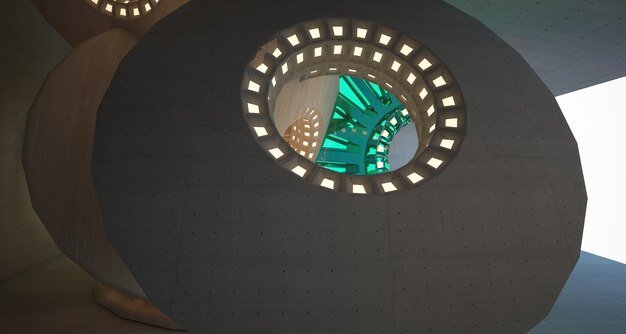Introduction to Trelpins Vault
What exactly is Trelpins Vault? If you’re passionate about architecture, design, and engineering feats, it’s time to get acquainted with this fascinating structural element. Trelpins Vault is a vaulted architectural design celebrated for its exceptional strength, beauty, and flexibility. From ancient use in robust structures to futuristic applications in modern spaces, Trelpins Vault is a staple in both creative and engineering circles.
This post dives into its rich history, innovative design, and the exciting possibilities it unlocks for the future. Whether you’re an architect seeking inspiration or a design enthusiast curious about its versatility, this guide highlights why Trelpins Vault deserves the spotlight.
History and Evolution
From Ancient Ingenuity to Timeless Appeal
The origins of Trelpins Vault can be traced back centuries, deeply rooted in the architectural traditions of ancient civilizations. Early builders discovered the efficiency of this design for creating durable, fire-resistant spaces capable of withstanding the tests of time. It was often seen in sacred buildings, castles, and grand public spaces.
Over time, these vaults evolved alongside advancements in materials and construction methods. The flexibility of Trelpins Vault allowed architects to adapt it for various purposes, refining its engineering precision while maintaining its unmistakable aesthetic appeal.
Imagine it—an architectural element born of necessity yet flourishing as an emblem of design ingenuity across centuries.
Architectural and Design Aspects
What Makes Trelpins Vault Structurally Unique?
The defining feature of Trelpins Vault lies in its geometric sophistication. Comprising interwoven arcs, the structure distributes weight and pressure evenly, ensuring remarkable stability and load-bearing strength.
Key Characteristics of the Vault:
- Curved Geometry: Distributes weight to minimize stress on the foundation.
- Endless Flexibility: Seamlessly incorporates into a wide range of layouts and designs.
- Material Adaptability: Originally constructed with stone, but now adapted to modern materials like steel and reinforced concrete.
Notable Examples
From the iconic framework in Roman aqueducts to cutting-edge contemporary galleries, Trelpins Vault has undeniably left its mark. Structures like the grand halls in historic Europe or certain sustainable modern homes owe their charm and functionality to this unique technique.
Contemporary Uses
Where Trelpins Vault Stands Out Today
Fast forward to the present, Trelpins Vault has been reimagined to thrive in modern architecture and art. While its fundamentals remain the same, its applications are more creative and versatile than ever.
Modern Designs Incorporating Trelpins Vault Include:
- Eco-Friendly Homes: Its inherent strength makes it sustainable and material-efficient.
- Public Spaces: Libraries, museums, and art galleries sporting the vault offer both functionality and breathtaking aesthetics.
- Interior Design: Vault-inspired ceilings add depth, elegance, and personality to home and office designs.
- Art Installations: Leveraging the vault’s structure to create experiential displays with light, sound, or kinetic elements.
Whether applied to roof spaces or as a framework for open domes, the vault brings elegance and an enduring, classic appeal to contemporary spaces.
Advantages and Challenges
Benefits of the Trelpins Vault
What makes Trelpins Vault a standout architectural solution?
- Strength and Stability: By distributing weight evenly, this design reduces structural stress points.
- Aesthetic Appeal: Its arc-like formations inspire awe and exude timeless elegance.
- Sustainability: Efficient material usage aligns perfectly with eco-conscious design.
- Dynamic Versatility: Suitable for large-scale architecture or fine interior details.
Challenges in Construction
No innovation comes without hurdles. Constructing a Trelpins Vault requires precision, skilled labor, and advanced engineering tools, often making it a complex and costly endeavor. Maintenance of older vaults also poses challenges, especially when restoring historic structures.
Still, these challenges don’t overshadow the vault’s unmatched contribution to art and engineering. They simply call for thoughtful planning and commitment.
The Future of Trelpins Vault
Where Does the Vault Go from Here?
The future of Trelpins Vault’s looks bright, with exciting innovations on the horizon. With advancements in 3D printing and material science, these vaults are becoming faster to produce and adaptable to unique, unconventional layouts.
The integration of sustainable building practices offers another promising avenue. Architects are now exploring vaults as part of eco-friendly infrastructures, thanks to their inherent material efficiency and adaptability.
Further innovations in computational modeling, parametric design, and artificial intelligence could make the Trelpins Vault’s even more precise and diverse in its applications.
Bringing It All Together
Trelpins Vault’s isn’t just a functional architectural element—it’s a symbol of human ingenuity and timeless design principles. From its ancient beginnings to its cutting-edge applications in modern living, this vaulted structure has adapted and thrived through the centuries.
Whether you’re marveling at its engineering finesse or admiring its aesthetic contribution to contemporary spaces, one thing is clear—the legacy of Trelpins Vault’s is far from over. Its relevance continues to rise, enriched by innovation and sustainable practices.
Have thoughts about incorporating Trelpins Vault’s into your projects? Share your ideas and leave a comment below. We’d love to hear your perspective on this architectural marvel!

